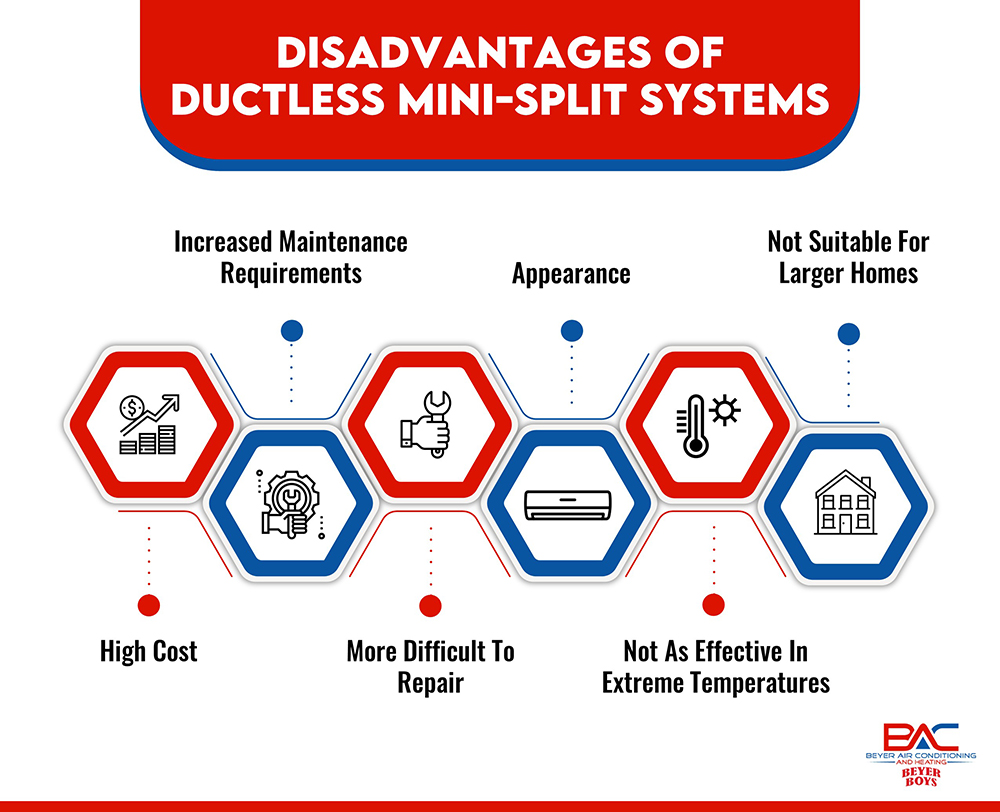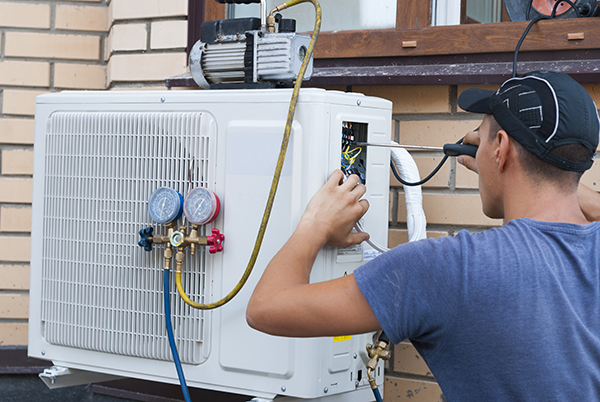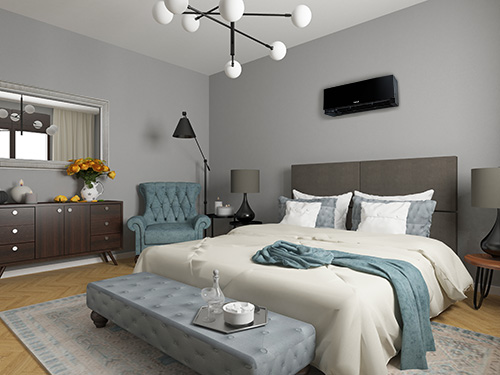Ductless mini-split systems can be a great choice if you’re looking to heat and cool a home that doesn’t have an existing ducted central heating and cooling system. Mini-split systems have some great advantages as they are typically very energy efficient and will often have a longer lifespan than central HVAC units. However, there are also a number of disadvantages to heating and cooling with a mini-split system, and today we’ll look at what these disadvantages are and how some of them can be overcome.
Contact Us for Mini-Split Services
How Ductless Mini-Splits Work
Ductless mini-splits are basically self-contained heat pump systems that use refrigerant to transfer heat energy either inside or outside the building to provide heating and cooling. Whereas a central heat pump relies on the building’s central air handler, blower and ductwork, a mini-split has individual air handlers that heat and cool each room. Depending on the system you choose, the outdoor heat pump unit could run anywhere from one to eight or more air handlers.
High Cost
Mini-splits are generally far easier and thus cheaper to install. After mounting the condenser or mini-split heat pump unit outside, a technician then only needs to cut a small hole in the wall for the refrigerant lines, condensate drip tube and electrical wiring.

Then the air handler unit is mounted inside on the wall or possibly ceiling, and everything is ready to go once the two units are connected. For a mini-split system with one to four air handlers, the entire installation can usually be completed in just one day.
The other factor that helps to offset the cost is that mini-splits are generally much more energy efficient than any other heating options. The energy efficiency when cooling is typically similar to an air conditioner, but mini-splits don’t have issues with air leaks and energy waste like most ducted systems.
Increased Maintenance Requirements
To function effectively, you also need to clean the internal filter in each air handler unit monthly. With central HVAC systems, all you need to do is replace the filter every one to three months.

If you’re using a mini-split system with six or eight air handlers to heat and cool your entire home, you’ll usually need to dedicate at least an hour every month to cleaning and drying the system’s filters.
More Difficult to Repair
The outdoor heat pump part of a mini-split generally is no more difficult to repair than an air conditioner or central heat pump. However, if any of the system’s air handlers need to be repaired, the unit will typically need to be removed from the wall to work on it.
Appearance
Many people also don’t like the way that mini-split air handlers look as they tend to be quite bulky and stick out from the wall. Ducted HVAC systems are less obtrusive since most everything is hidden away.
However, if aesthetics are important to you, you may be able to have the air handlers recessed into the ceiling so they are hidden. In this case, all you will see is a vent like you would with a ducted system. While recessing the air handlers can add quite a bit to the installation cost, it can still be a good option if you don’t like the way the air handlers look.
Not as Effective in Extreme Temperatures
Mini-splits are always at their most effective and most energy efficient in more moderate conditions. If the outdoor temperature is more than 20 degrees higher than your desired indoor temperature, a mini-split will use more energy and not cool your home as effectively. They work great when the temperature is in the 70s or 80s, but they can start to struggle if it ever gets hotter than 95 to 100 degrees.
Most mini-split systems can continue to provide some heat even when the outdoor temperature is well below freezing, but their energy efficiency and effectiveness do decrease the colder it gets. This means that you may often need to also rely on some type of supplementary heat source to ensure your home stays warm enough on those really cold days.
Another thing to consider is that mini-splits will always start to have frost build up on the heat pump unit’s coil whenever the outdoor temperature is below freezing. This is why most mini-splits have a defrost cycle that occasionally kicks on in cold weather to thaw the unit out. The outdoor heat pump has an internal temperature sensor that detects when the unit starts to freeze up.
When the sensor detects the unit needs to defrost, the heat pump’s reversing valve gets excited and triggers the system to run in reverse. During the defrost cycle, the unit temporarily changes to cooling mode so that hot refrigerant flows through it to melt any frost and ice on the coil. Since the system runs in cooling mode when defrosting, you won’t have any heat until it finishes the defrost cycle and switches back to heating mode. In extremely cold weather, a mini-split may need to defrost every hour and this is another reason why you’ll often need a supplementary heat source.
Not Suitable for Larger Homes

If your home doesn’t have a central HVAC system, then a mini-split can still be an excellent option. However, if your home already has ductwork installed, you are generally always best to opt for central heating and cooling instead. If you’re unsure whether a mini-split system is right for your home, you can trust the team at Beyer Air Conditioning & Heating for help. We install a range of mini-split systems as well as central air conditioners, heat pumps and furnaces, and our team can also help if you need any HVAC repairs or maintenance or indoor air quality services.



